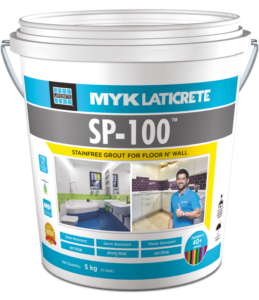FAQs

LATICRETE® 325 High Flex (Formerly LATICRETE® 252)
Frequently Asked Questions
LATICRETE® 325 High Flex is high polymers and cement based thin set adhesive which is mixed with water and used for tile installation in internal and external areas.
You can use LATICRETE® 325 High Flex Ag Silver for internal and external areas like residential floors, walls to install ceramic /vitrified/ glass mosaic tiles.
For 20 Kg bag of LATICRETE® 325 High Flex, one needs 5 to 6 Liters of water. Mix water depending upon the consistency of mix required and ambient environmental conditions.
For metal tile installation, use epoxy based thin set adhesive. Seek advice from MYK LATICRETE team member for suitable adhesive for the type of metal tile used.
The maximum size of ceramic / vitrified tile is 1000mm X 1000mm for installation with LATICRETE® 325 High Flex + water. If you are installing tiles larger than this size ask MYK LATICRETE team member for a suitable thin set adhesive.
Yes. For external tile installations, the thermal stresses are critical and would need adhesive to become accommodative to the movements arising from these stresses. LATICRETE® 325 High Flex Ag Silver has the ability to accommodate such movements.
When you want to install Natural stones with LATICRETE® 325 High Flex, seek advice from MYK LATICRETE team member as natural stones are of various types and have absorption which may create problems like staining of stones, ugly patches, picture framing etc.,
The maximum height is 50 ft when you want to install tiles using LATICRETE® 325 High Flex Ag Silver. For installation of tiles more than 50 ft height, please seek advice from MYK LATICRETE team member.
9. Can I install Engineered stones / Agglomerates / Quartz using LATICRETE® 325 High Flex Ag Silver?
If the engineered stones / Agglomerates / Quartz stones have to be installed on floors, you may use LATICRETE® 325 High Flex Ag Silver. But the size of stones shall not be more than 600mm X 600 mm. For sizes higher than this, contact MYK LATICRETE Team member for seeking advice.
No. It is mandatory to have spacing between the tiles when installed on external façade. The thermal movements are very high and spacers are must to accommodate such movements.

